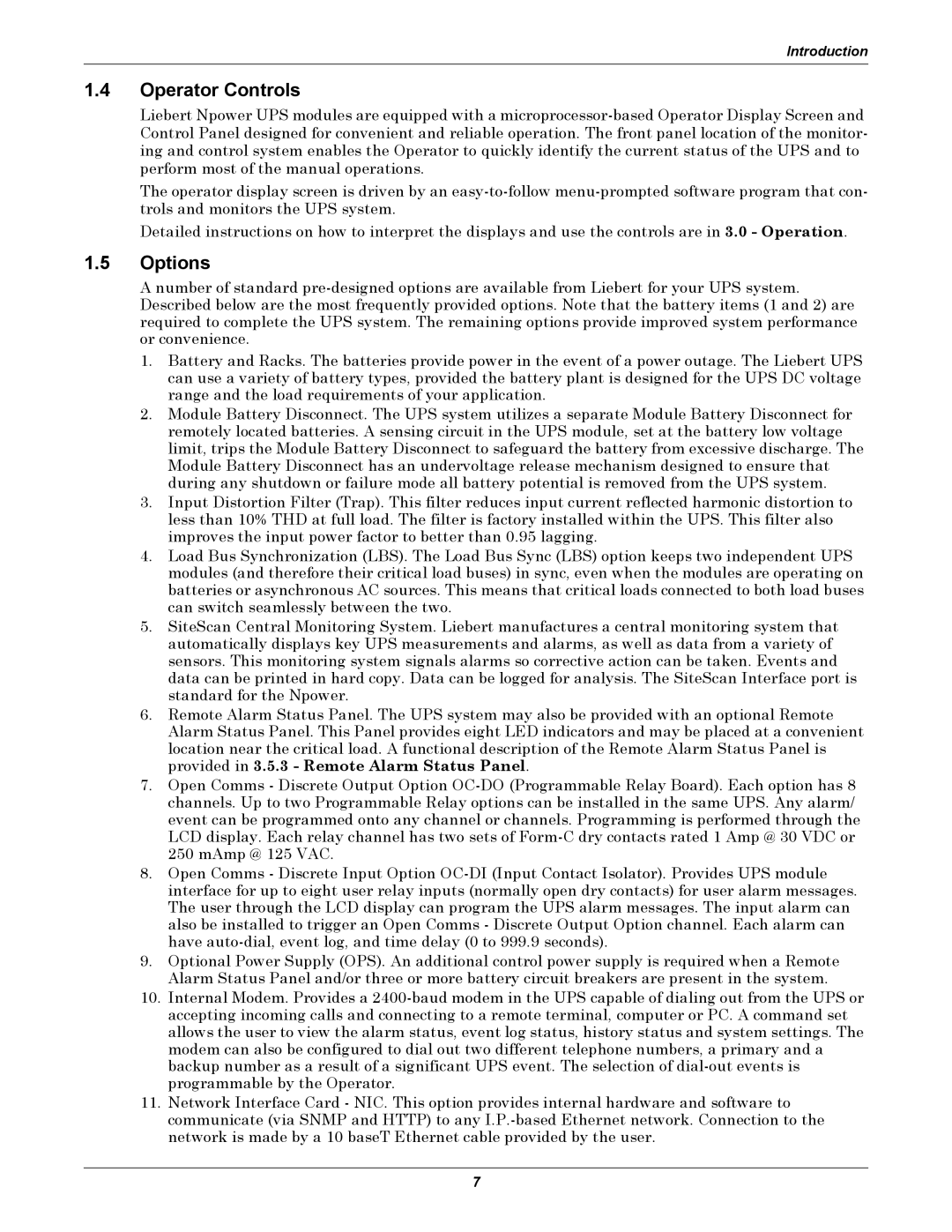
Introduction
1.4Operator Controls
Liebert Npower UPS modules are equipped with a
The operator display screen is driven by an
Detailed instructions on how to interpret the displays and use the controls are in 3.0 - Operation.
1.5Options
A number of standard
1.Battery and Racks. The batteries provide power in the event of a power outage. The Liebert UPS can use a variety of battery types, provided the battery plant is designed for the UPS DC voltage range and the load requirements of your application.
2.Module Battery Disconnect. The UPS system utilizes a separate Module Battery Disconnect for remotely located batteries. A sensing circuit in the UPS module, set at the battery low voltage limit, trips the Module Battery Disconnect to safeguard the battery from excessive discharge. The Module Battery Disconnect has an undervoltage release mechanism designed to ensure that during any shutdown or failure mode all battery potential is removed from the UPS system.
3.Input Distortion Filter (Trap). This filter reduces input current reflected harmonic distortion to less than 10% THD at full load. The filter is factory installed within the UPS. This filter also improves the input power factor to better than 0.95 lagging.
4.Load Bus Synchronization (LBS). The Load Bus Sync (LBS) option keeps two independent UPS modules (and therefore their critical load buses) in sync, even when the modules are operating on batteries or asynchronous AC sources. This means that critical loads connected to both load buses can switch seamlessly between the two.
5.SiteScan Central Monitoring System. Liebert manufactures a central monitoring system that automatically displays key UPS measurements and alarms, as well as data from a variety of sensors. This monitoring system signals alarms so corrective action can be taken. Events and data can be printed in hard copy. Data can be logged for analysis. The SiteScan Interface port is standard for the Npower.
6.Remote Alarm Status Panel. The UPS system may also be provided with an optional Remote Alarm Status Panel. This Panel provides eight LED indicators and may be placed at a convenient location near the critical load. A functional description of the Remote Alarm Status Panel is provided in 3.5.3 - Remote Alarm Status Panel.
7.Open Comms - Discrete Output Option
8.Open Comms - Discrete Input Option
9.Optional Power Supply (OPS). An additional control power supply is required when a Remote Alarm Status Panel and/or three or more battery circuit breakers are present in the system.
10.Internal Modem. Provides a
11.Network Interface Card - NIC. This option provides internal hardware and software to communicate (via SNMP and HTTP) to any
7
